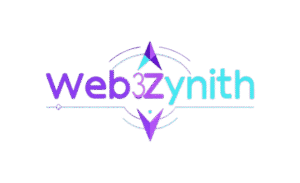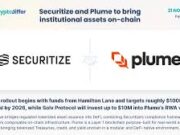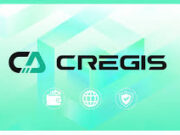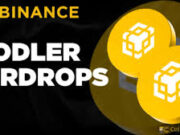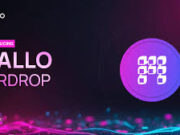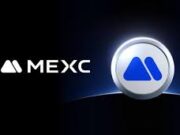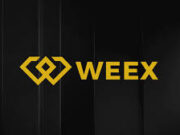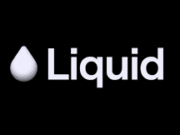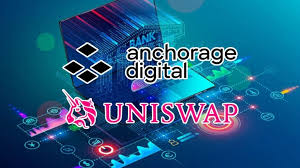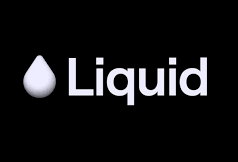On June 23, 2025, Anchorage Digital, a leading crypto platform for institutional investors, announced a game-changing integration of the Uniswap Labs Trading API into its self-custody wallet, Porto. This move is set to supercharge institutional access to decentralized finance (DeFi) by enabling seamless token swaps and direct access to Uniswap’s deep liquidity pools—all within a secure, compliant, and user-friendly interface. Here’s why this partnership is a big deal, how it bridges traditional finance and DeFi, and what it means for the future of institutional crypto adoption.
Breaking Down the Integration
Anchorage Digital, the only federally chartered crypto bank in the U.S., is known for its institutional-grade custody, trading, and governance solutions. Its Porto wallet, designed for asset managers, protocol foundations, and other heavyweights, now allows users to execute DeFi trades directly from the web dashboard, bypassing the need for external decentralized apps (dApps). By integrating Uniswap’s Trading API, Anchorage taps into the liquidity of Uniswap, the leading decentralized exchange (DEX) with over $4.5 billion in total value locked (TVL) and 27% of DEX spot trading volume as of May 2025.
This integration delivers three key benefits:
- Streamlined Workflows: Institutional users can swap tokens in a few clicks, eliminating the complexity of navigating third-party platforms. This is a far cry from the clunky DeFi interfaces that have historically deterred traditional finance players.
- Unmatched Security: Anchorage’s Porto wallet keeps private keys offline, secured in air-gapped, tamper-proof hardware security modules (HSMs). This ensures that even high-volume DeFi trades remain protected against hacks—a critical feature for institutions managing large portfolios.
- Deep Liquidity Access: Uniswap’s $3 trillion in all-time trading volume and robust liquidity across thousands of assets mean institutions can execute trades at competitive prices, even for less liquid tokens.
As Nathan McCauley, CEO and Co-founder of Anchorage Digital, put it, “This integration empowers institutions in DeFi to move at crypto-native speed—without compromising security.” Uniswap Labs’ CEO Hayden Adams echoed the sentiment, noting that institutions are increasingly turning to Uniswap for “fast and reliable execution.”
Why This Matters for Institutions
DeFi has long been the Wild West of crypto—full of opportunity but fraught with risks like smart contract vulnerabilities, regulatory ambiguity, and user-unfriendly interfaces. For institutions, these hurdles have made direct participation a tough sell, despite DeFi’s promise of transparency, efficiency, and high yields. Anchorage’s Uniswap integration changes the game by offering a secure, compliant on-ramp to DeFi that aligns with the risk management and governance standards institutions demand.
Porto’s clients, which include Maple Finance, the Sui Foundation, and DEX dYdX, now have a one-stop shop for custody and DeFi trading. This is particularly timely as institutional interest in DeFi surges. According to DeFiLlama, the sector’s TVL stands at $106 billion, down from $137 billion six months ago, but still a massive pool of capital. Uniswap alone accounts for $4.57 billion of that, underscoring its dominance.
The integration also reflects a broader trend: traditional finance is warming to DeFi. BlackRock’s partnership with Anchorage for custody services and Anchorage’s $3 billion valuation in 2021 (backed by Andreessen Horowitz, Goldman Sachs, and Visa) highlight its credibility in bridging these worlds. By embedding Uniswap’s liquidity into Porto, Anchorage is making DeFi as accessible as trading stocks on a brokerage platform.
The Bigger Picture: DeFi Goes Mainstream
This partnership comes at a pivotal moment for crypto. Bitcoin’s recent surge past $105,000 and Ethereum’s climb above $2,400 signal a bullish market, driven by institutional inflows and regulatory clarity like the U.S. Senate’s GENIUS Act for stablecoins. Meanwhile, Fiserv’s launch of the FIUSD stablecoin on Solana with Circle, Paxos, and PayPal shows how traditional finance is embracing blockchain for real-world payments. Anchorage’s Uniswap integration fits right into this narrative, proving that DeFi isn’t just for crypto natives—it’s ready for Wall Street.
Posts on X capture the excitement, with users calling the move a “game-changer” for institutional DeFi adoption and a “bullish signal” for Uniswap’s role in bridging traditional and decentralized finance. One post noted a 10.12% 24-hour price jump for Uniswap’s UNI token to $6.782, reflecting market optimism.
Looking ahead, Anchorage’s integration lays the groundwork for a more interconnected DeFi ecosystem. By simplifying access to Uniswap’s liquidity, it could pave the way for institutions to explore other DeFi protocols, from lending platforms like Aave to yield optimizers like Yearn Finance (both previously supported by Anchorage). As more banks and funds dip their toes into DeFi, the sector’s TVL could rebound, potentially hitting Citi’s projected $3.7 trillion in stablecoin AUM by 2030.
Challenges and Risks
Despite the hype, challenges remain. DeFi’s volatility and smart contract risks can’t be fully eliminated, even with Anchorage’s robust security. Regulatory scrutiny is another hurdle—while the GENIUS Act clarifies stablecoins, DeFi protocols like Uniswap operate in a grayer area. Institutions will need to navigate these uncertainties, though Anchorage’s status as a regulated crypto bank (with licenses in the U.S. and Singapore) mitigates some concerns.
There’s also competition. Other institutional platforms like Blockdaemon, Fireblocks, and Consensys offer similar wallets, and Ledger recently integrated Uniswap’s API into its Ledger Live platform. Anchorage will need to differentiate itself through superior security, user experience, and additional DeFi integrations to stay ahead.
What’s Next?
Anchorage’s Uniswap integration is a bold step toward making DeFi a cornerstone of institutional portfolios. As Porto users—ranging from liquid funds to protocol treasuries—start leveraging Uniswap’s liquidity, expect a ripple effect: more institutions exploring DeFi, increased trading volume on Uniswap, and greater mainstream acceptance of decentralized markets. Anchorage is already eyeing further DeFi enhancements, with its history of supporting tokens like Aave, SushiSwap, and Curve Finance suggesting more integrations are on the horizon.
For now, this partnership is a win for both Anchorage and Uniswap. It cements Anchorage’s Porto as the go-to wallet for institutional DeFi and reinforces Uniswap’s position as the DEX of choice for serious players. As one X user put it, “Big money gets seamless, compliant access to on-chain liquidity—removing friction that’s kept tradfi sidelined.”
Whether you’re an institutional investor, a DeFi enthusiast, or just watching the crypto space evolve, Anchorage’s latest move is a clear signal: DeFi is no longer a niche—it’s the future of finance.
Sources:
- Anchorage Digital: “Anchorage Digital Accelerates Institutional DeFi with Native Uniswap Labs Trading API Integration”
- Cointelegraph: “Anchorage adds DeFi capability for institutions with Uniswap wallet integration”
- Business Wire: “Anchorage Digital Adopts Uniswap’s API Enabling Institutional Access to DeFi Liquidity”
- The Block: “Anchorage Digital integrates Uniswap Labs Trading API to give institutional wallet users improved DeFi liquidity”
- Crypto Economy: “Anchorage Digital Adds Uniswap Access for Institutional DeFi Trading”
- Posts on X reflecting market sentiment
